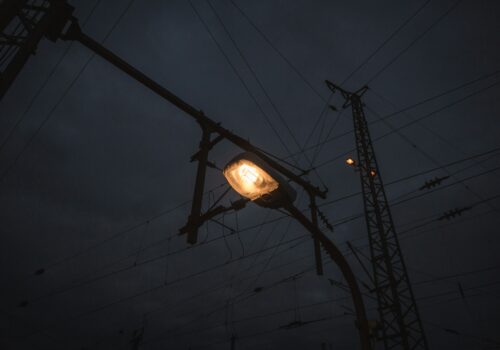Balaclavas are in, apparently
Words: Eva O’Beirne
Can the Irish fashion scene ever embrace the balaclava, or is the past simply too present?
Picture this. You’re scrolling through TikTok, mindlessly tapping away and searching for content that will entertain you for a few fleeting seconds. You restlessly push your thumb up the screen until a sound catches your eye: “Gorgeous, gorgeous girls wear balaclavas. Gorgeous, gorgeous girls avoid the drama.”
I don’t think the IRA would necessarily agree with this sentiment.
Searches for balaclavas have jumped 230 per cent on Pinterest since the start of November, and the question “how to knit a balaclava” has grown more than 5000 per cent on Google in the past 12 months. It even has its own TikTok filter. We associate the notorious knitted headpiece with The Troubles, trauma and violence, so how has it managed to wiggle its way into the fashion houses of Europe?
The history of the humble balaclava
Historically, we know that the woollen accessory is more often associated with war tactics than runway trends. The mask takes its name from the Ukrainian port town of Balaclava, the backdrop for a battle in 1854 during the Crimean War, where British and Irish troops were sent to fight Russian soldiers in freezing conditions. When the soldiers arrived in sub-standard uniforms and low supplies, British women began knitting full-face hats for the troops.

The knitted headgear has since become symbolic of the eastern European militia after being used by pro-Russian separatist demonstrators to avoid surveillance. Nostalgia for post-Soviet culture has been continuously growing on social media for the past two years. The hashtag #sovietaesthetic has 4.7 million views on TikTok alone.
Okay, but who is actually wearing them?
You may think balaclavas are incapable of being cute or fun but you’d be wrong. They don’t have to be deep black, or even cover your whole face. Balaclavas are extremely versatile with a variety of covering options. Some TikTok users have attributed the pandemic as a reason why they started covering their faces with the headwear. A more chic version of a mask, you can add a pop of colour to a monochrome outfit or indulge in a few retro patterns.
Balaclavas have been a mainstream accessory since the 1950s and have continued to pop up on runways every few years. Virgil Abloh featured a hallucinatory checkerboard-style take on the mask while Givenchy added devil horns. Balaclavas have also featured in recent collections by Moschino, Balmain and Balenciaga before trickling down into brands like Urban Outfitters and ASOS.

Just because you haven’t seen them around town yet doesn’t mean they won’t be soon. Microtrends, the latest feature of fast fashion culture, have created the opportunity for retailers to continuously cash in on what is popular on social media. The Spring and Fall collections have been swept away by waves of aesthetically-pleasing accessories that are often impossible to style if you don’t have a matching wardrobe. People by into micro-trends because they believe they’ll look exactly like the influencer posing in the video with millions of likes.

A case for making balaclavas the next big trend
So you’re probably thinking “balaclavas are just part of the fast-fashion cycle, they serve no purpose except to act as a glorified beanie” and to some extent that is true, but I want you to consider a rising style: modest fashion.
Modest fashion refers to women wearing less skin-revealing clothes, especially in a way that satisfies their spiritual and stylistic requirements for reasons of faith, religion or personal preference. Go onto any fashion retailer’s website and they’ll have a section dedicated to this way of dressing. And that’s where balaclavas come in.
The idea of normalising different headpieces, especially worn on women can be interpreted as a step forward for inclusivity. It can be a double-edged sword. We know that balaclavas come from Eastern Europe, but we also know to be able to participate in a trend is an incredible privilege. For Kim Kardashian to wear a head-to-toe, all-black Balenciaga outfit to the Met Gala, and to be applauded for it, highlights the injustice of some women being criticised or even hate-crimed for dressing modestly.

In an Irish context, its also hard to assess whether balaclavas could be a positive or negative trend. The nation hears the word and automatically thinks of extreme violence. But surely the 2022 chic balaclava is far removed from any republican ideology?
I mean KNEECAP have made the more traditional, republican balaclava central to their marketing and image. Isn’t that a step forward too? KNEECAP don’t incite violence, instead they long for 32 county republic and for the Irish language to be accepted.

Who would have thought that a head covering made of wool could have such weighted implications? Don’t ask your granny to make one for you though. That might be too far.
Elsewhere on District: The 21 “Most Irish” Moments of 2021






